Ice experiments
The scientific side of our Antarctic exploration?
First I have to admit that I got the idea for these two extremely basic experiments from the book 365 Simple Science Experiments. Embarking on a journey through Antarctica I just did a quick search through the index and found a handful of experiments pertaining to ice, two of which seemed fun. Lucky for the authors I'm passing judgement on over the whole book based on these two experiments. Doing any hands-on experiment is fun, but as far as I can tell the premise behind each of these experiments is based on faulty logic.
Glacier Melt (p.151)
• We gathered small pebbles and sand from our garden in plastic cups, then filled the cups the rest of the way with water, jiggling the cups to make sure all the air was released.
• Set cups in freezer until completely frozen
• Meanwhile, create a shallow incline by propping a board up on a small object. Drive a nail into the board in the middle at the top.
• Remove cups from freezer and use a knife (or application of warm hands for a short time) to loosen and remove the "glacier" from the cup without damaging it.
• Place "glacier" on inclined board. To keep it from sliding down the board use a rubberband to attach it to the nail.
• Observe melt and runoff.
From the book: "Glaciers are large masses of ice that move down mountainsides and valleys cutting gouges out of the rock and soil. Deposits from glacier movements can be found in such places as the arctic, Antarctica, Finland, and Greenland. These giant masses of ice would not move at all if it weren't for the great pressures they also exert....As glaciers move, they break off and pick up tons of rock and soil and deposit it someplace else...Like the real thing, our miniature-glacier experiment shows how and why those rock and sand deposits are so unusual and often unevenly placed." (p.151)
Which is all fine and good, and some moraines are left behind by glacial melt waters, but I find it misleading to imply that a stationary mini-glacier is the same as a moving glacier that not only expells moraine in melt-water, but also leaves it along the side as it slowly moves on, or gouges it into the ground, or drops it as glacial ice breaks off into the water.
Tip of the Iceberg (p.278)
• we filled a cup with ice and cold water, and marked the level of the water on the side of the glass
• when the ice had melted we observed the water level to see if it had changed.
From the book: "When the ice cubes melt, the water does not overflow. The ice cubes simply displaced the water in the glass, or the amount of ice that melted was exactly equal to the mass of the ice cubes below the water. Like the ice cubes in teh glass, the main part of an iceberg is under water. If all teh icebergs were to melt, as did the ice cubes in our experiment, the sea level would remain the same." (p.278)
This is fundamentally true, but is completely useless as a means of teaching about environmental change and the hazards of a warming planet, and as stated in the above manner could be misconstrued. Sure if all the icebergs melt the water level will remain the same, but Antarctica holds 90% of the world's ice and 70% of the world's fresh water (source). If that melts, you can bet your bottom dollar that the sea level is going to rise.
Homemade Iceberg (our own concoction)
• Fill a plastic cup with cold water, add a few drops of food coloring, and set in freezer until frozen solid
• Fill a bowl with warm water (preferably a clear bowl)
• Add "iceberg" and observe
We had two objects here. First we wanted to observe the currents in the water, which the food coloring allowed us to do. Second, we wanted to observe the melting of the ice—how it does not stay in one place, how it crakcs, and how it does not necessarily melt evenly but instead takes on a shape that becomes more and more obvious as it melts further.
We used red dye, so unfortunately our berg looks a little like frozen meat of some kind. We had fun anyhow.
 Science | tagged
Science | tagged  Antarctica,
Antarctica,  experiments
experiments 




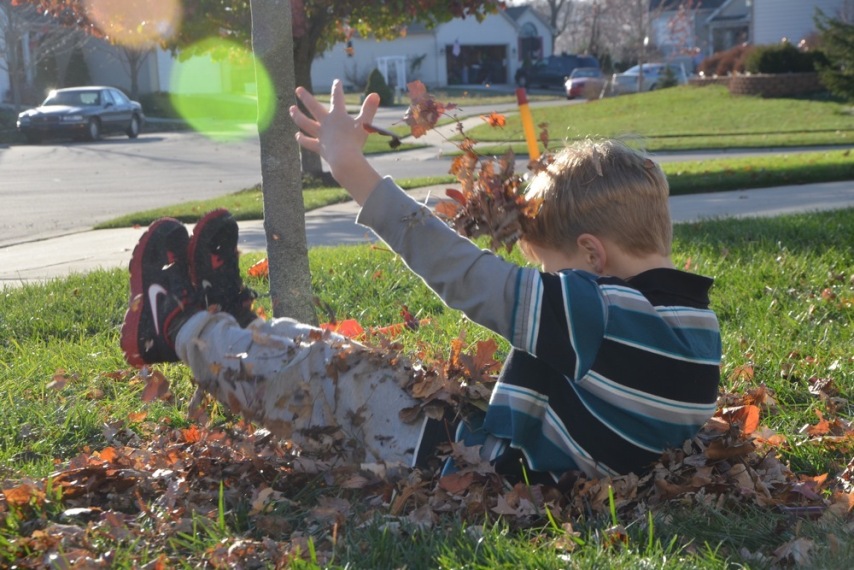

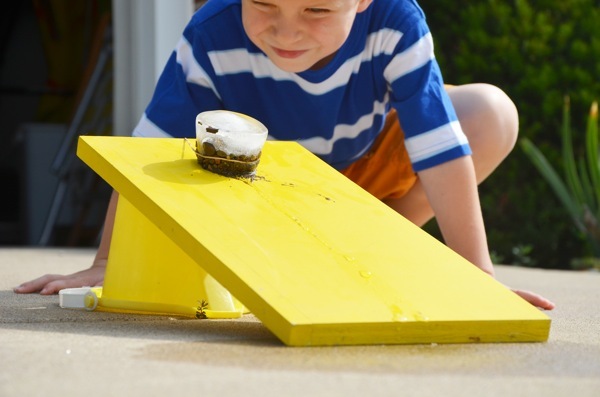
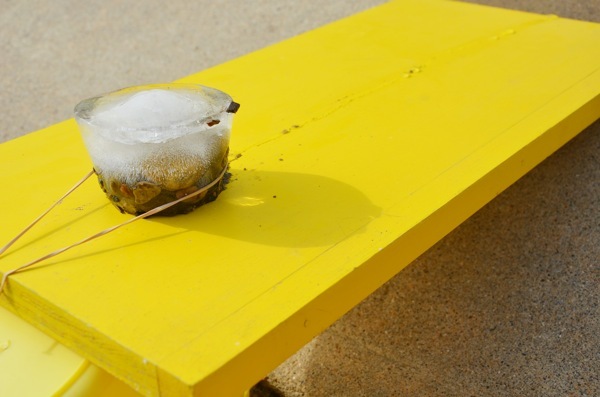
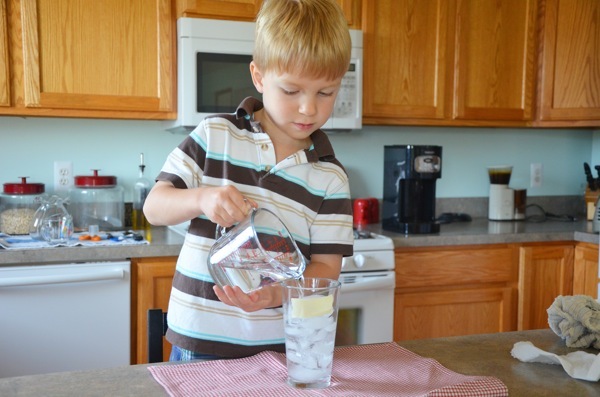
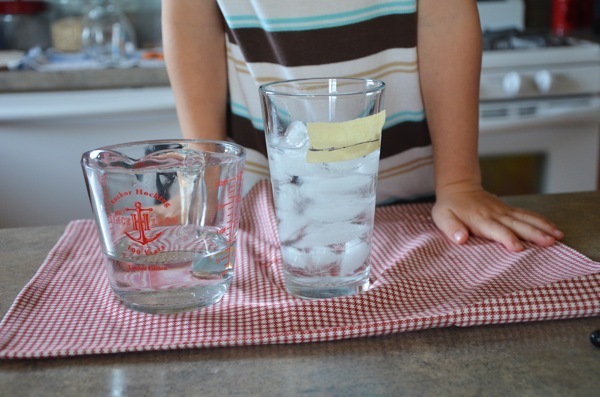
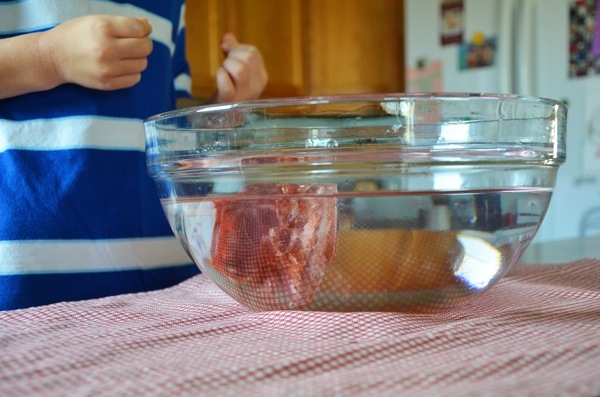
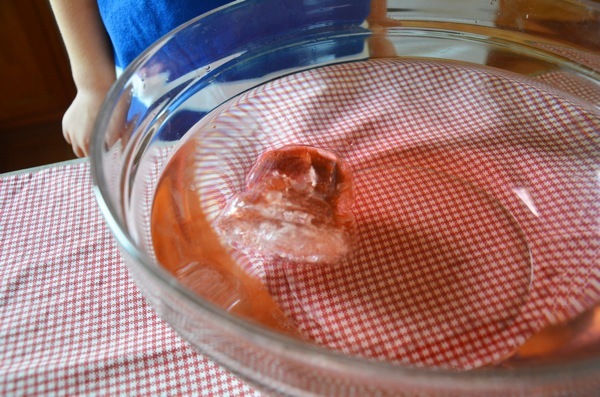
Reader Comments